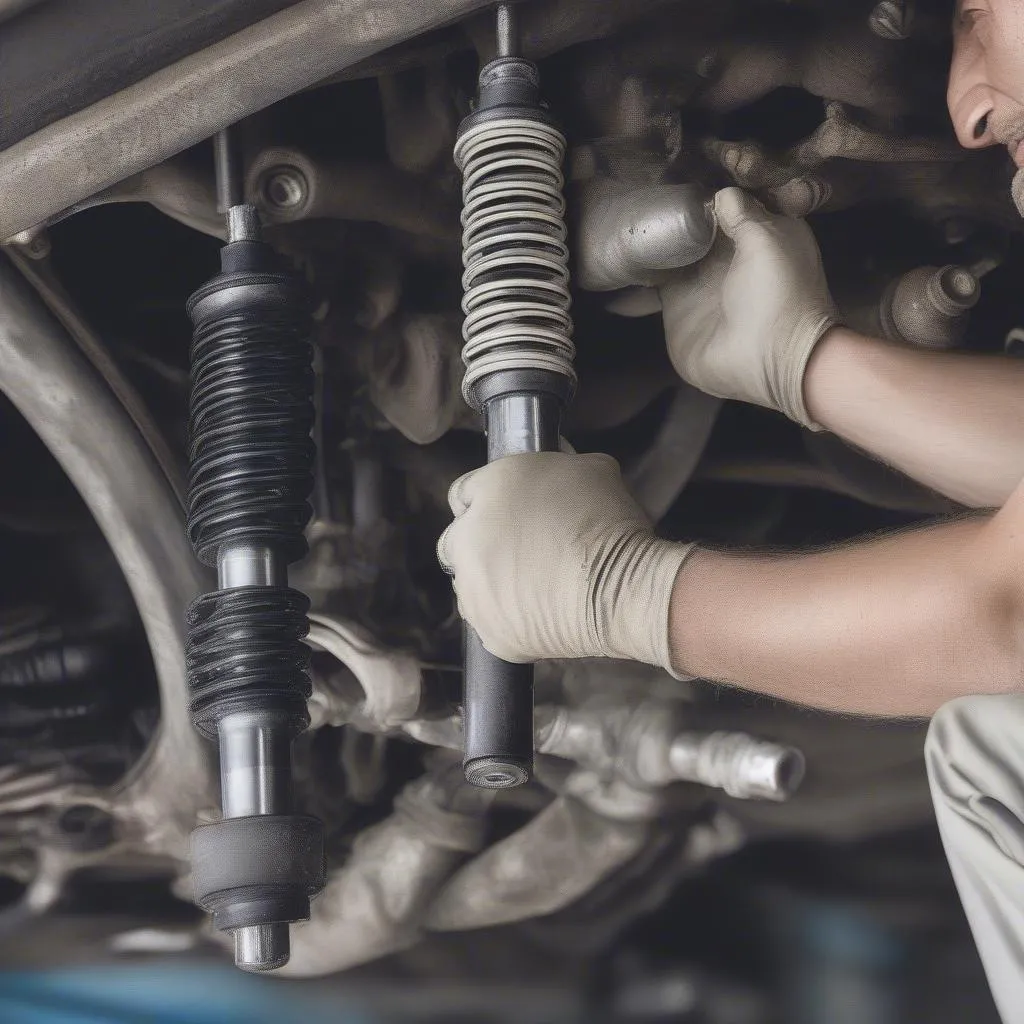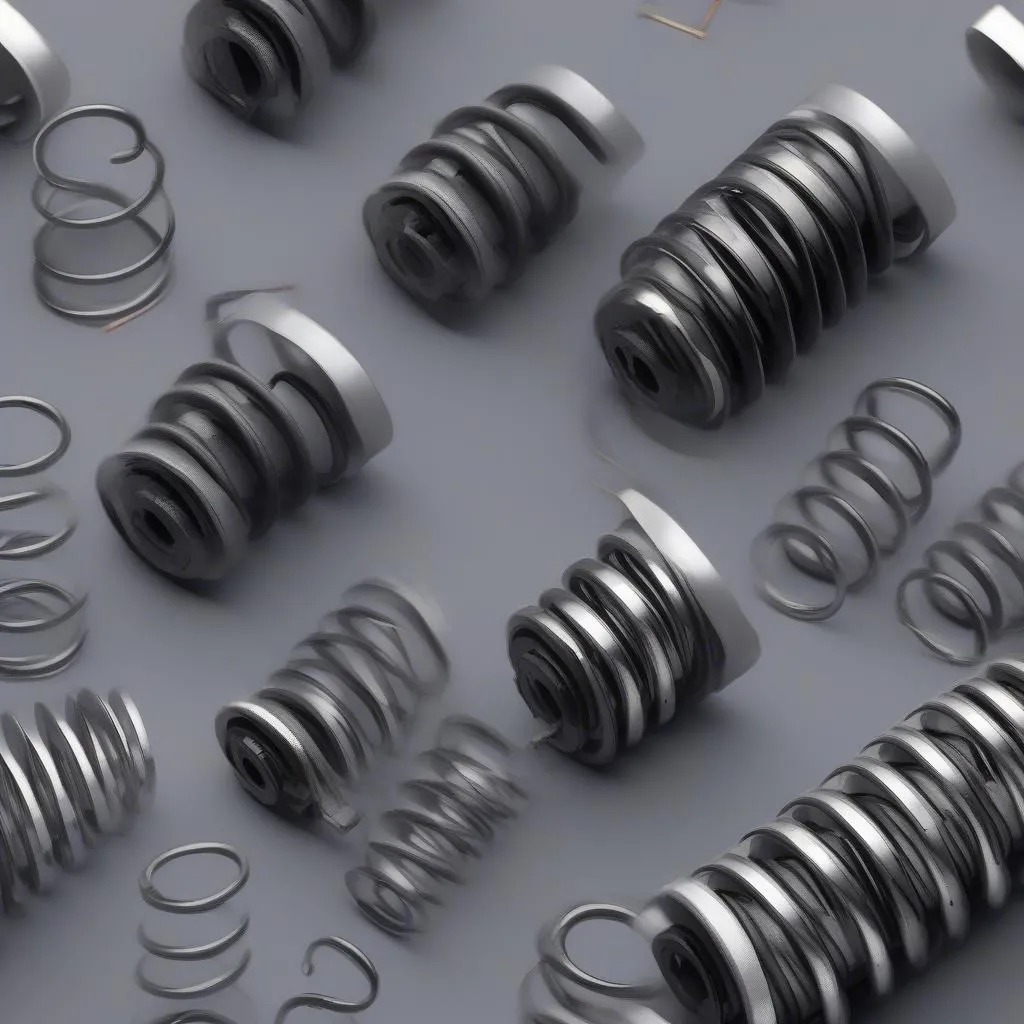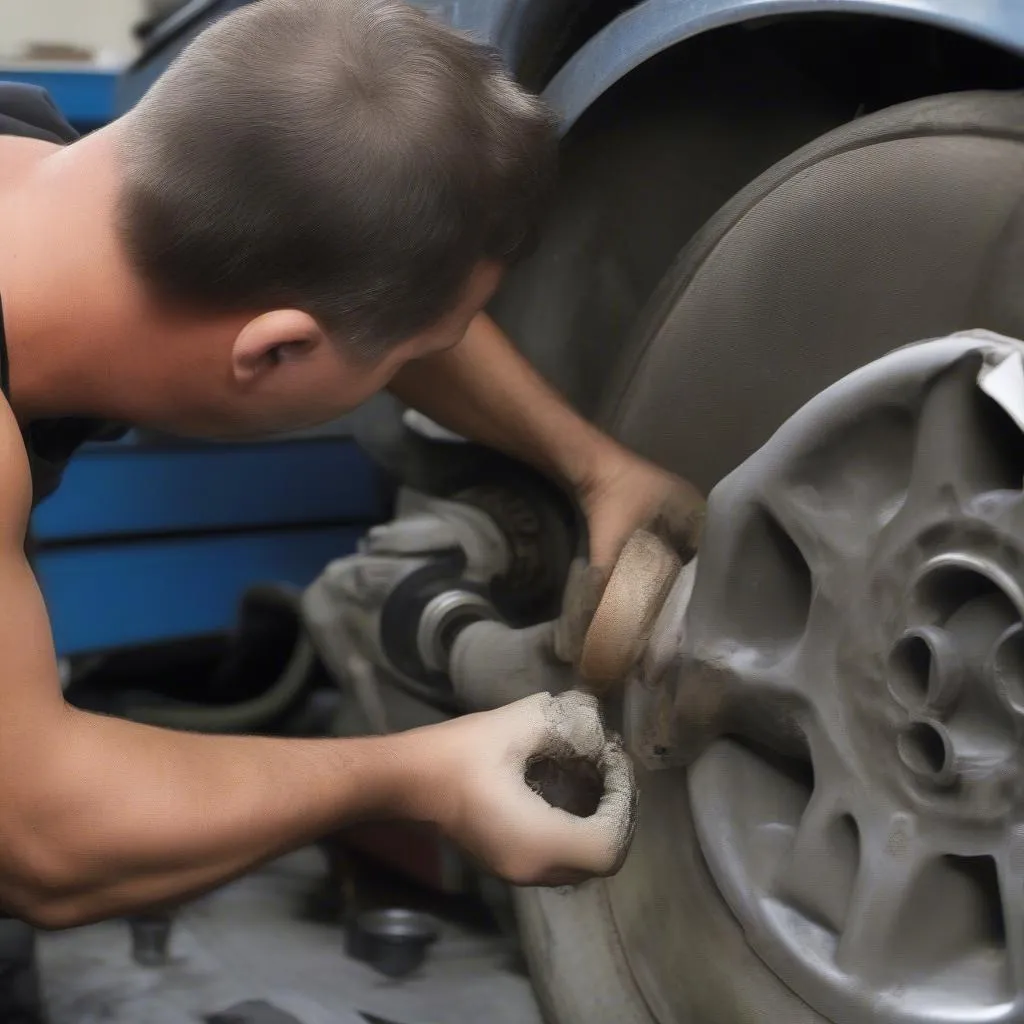Imagine this: You’re cruising down the highway, enjoying the open road, when suddenly your car starts bouncing up and down like a rubber ball. It’s unsettling, jarring, and frankly, a bit scary. You might wonder, “What’s wrong with my car?” And you’re not alone. Many drivers experience this unsettling phenomenon, and today we’re going to delve into the reasons behind this bouncing behavior and how to get your ride back to its smooth-sailing self.
Understanding the “Bouncing Car” Phenomenon
This “bouncing car” issue can be a symptom of several underlying problems. From a mechanic’s perspective, it’s important to diagnose the root cause to find the right solution. From a technical standpoint, this bouncing is often linked to issues with your car’s suspension system, which is responsible for keeping your car stable and comfortable while driving. Think of it like the shock absorbers on a building, absorbing the impact of vibrations and preventing the whole structure from shaking.
But the bouncing can also have implications for your car’s performance and overall health. A bouncing car can be a sign of wear and tear, potentially leading to more significant problems in the future.
What Causes My Car to Bounce?
Worn-Out Shocks or Struts
 Car shocks replacement
Car shocks replacement
The most common culprit behind a bouncing car is worn-out shock absorbers or struts. These crucial components are responsible for damping the vibrations and oscillations caused by bumps and uneven roads. Over time, these parts wear out and lose their ability to effectively absorb shocks, leading to that unpleasant bouncing sensation.
Bad Springs
 Car suspension springs
Car suspension springs
Car springs play a critical role in keeping your car at the right height and maintaining stability. They work in tandem with shocks to absorb bumps and dips in the road. When these springs lose their elasticity and become worn or broken, your car can start to bounce.
Worn Bushings
 Car suspension bushings
Car suspension bushings
Bushings are rubber components that connect various suspension parts, allowing them to move smoothly and absorb vibrations. As they age, they can crack, tear, or become hardened, leading to excessive movement and a bouncing sensation.
Damaged or Loose Suspension Components
If other suspension components like control arms, ball joints, or tie rod ends are damaged or loose, they can contribute to a bouncing car. These components are responsible for maintaining the wheel alignment and controlling the movement of the suspension system.
How to Fix a Bouncing Car
Now that you understand the common causes, you might be wondering how to fix this bouncing problem. The good news is that most cases can be resolved with relatively simple repairs.
1. Replace Worn Shocks or Struts
The most frequent fix for a bouncing car is to replace worn-out shocks or struts. A qualified mechanic can inspect your car’s suspension system and recommend the appropriate replacements.
2. Replace Worn Springs
If your car springs are worn or broken, they’ll need to be replaced. A mechanic can examine the springs and determine if replacement is necessary.
3. Replace Worn Bushings
If you have worn bushings, you’ll need to replace them. A mechanic can assess the condition of the bushings and determine if replacement is needed.
4. Repair or Replace Damaged Suspension Components
If your car has damaged or loose suspension components, you’ll need to repair or replace them. A mechanic can diagnose the problem and provide the necessary repairs.
Additional Tips for Preventing a Bouncing Car
-
Regular Inspections: Schedule regular maintenance checks for your car’s suspension system. This will help identify any issues early on, before they become major problems.
-
Proper Tire Pressure: Ensure your tires are inflated to the recommended pressure, as under-inflated tires can worsen bouncing.
-
Avoid Excessive Loading: Don’t overload your car with too much weight, as this can put undue stress on your suspension system.
What Happens if I Don’t Fix the Bouncing?
Ignoring a bouncing car can lead to more significant problems, including:
- Uneven Tire Wear: Bouncing can cause your tires to wear down unevenly, leading to premature tire failure.
- Increased Fuel Consumption: A bouncing car can reduce your car’s fuel efficiency as the suspension system works harder to absorb the vibrations.
- Reduced Handling: A bouncing car can affect your car’s handling and make it difficult to control.
- Safety Risks: In extreme cases, a bouncing car can lead to loss of control and increase the risk of accidents.
Other questions about car bouncing:
“What are the symptoms of worn shocks or struts?”
Worn shocks or struts often cause a bouncing sensation when driving over bumps or uneven roads. You might also notice excessive body roll when cornering or a feeling of instability on the road.
“What are the signs of a bad suspension?”
A bad suspension can manifest itself in several ways. Beyond bouncing, you might notice:
- Clunking or thumping noises when driving over bumps.
- A noticeable dip or sag in the car’s body.
- Steering wheel vibrations.
- Uneven tire wear.
- A feeling of looseness in the steering wheel.
- Increased braking distance.
“How often should I have my suspension inspected?”
It’s a good idea to have your car’s suspension system inspected every 12,000 to 15,000 miles or annually, whichever comes first. This will help ensure your car is in safe working order.
What Else Could Be Causing the Bouncing?
While suspension issues are the most common culprits, other factors can also contribute to a bouncing car:
- Tire Problems: Uneven tire wear, a flat tire, or damaged tires can also cause bouncing.
- Wheel Alignment Issues: Improper wheel alignment can cause the car to pull to one side and create a bouncing sensation.
What to Do When You Encounter a Bouncing Car
If you notice your car bouncing while driving, it’s essential to address the issue promptly.
1. Check your tire pressure. Ensure your tires are properly inflated to the manufacturer’s specifications.
2. Have your car inspected by a qualified mechanic. A professional mechanic can diagnose the cause of the bouncing and recommend the necessary repairs.
Need Help with Your Car’s Diagnostics?
We can help! If you’re experiencing issues with your European car and need assistance with diagnostics, our team of expert mechanics is available to help. Contact us via Whatsapp at +84767531508. We’re here to help you keep your car running smoothly!